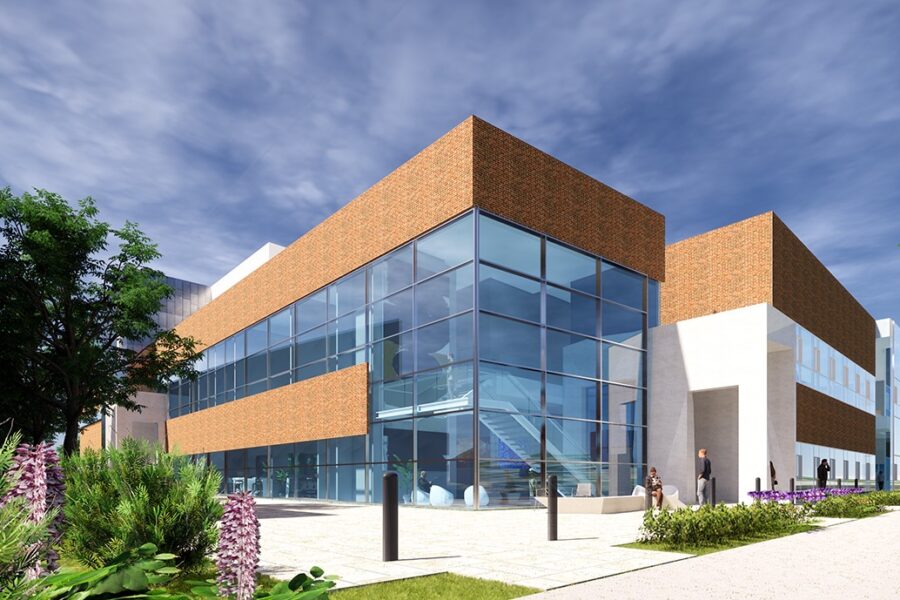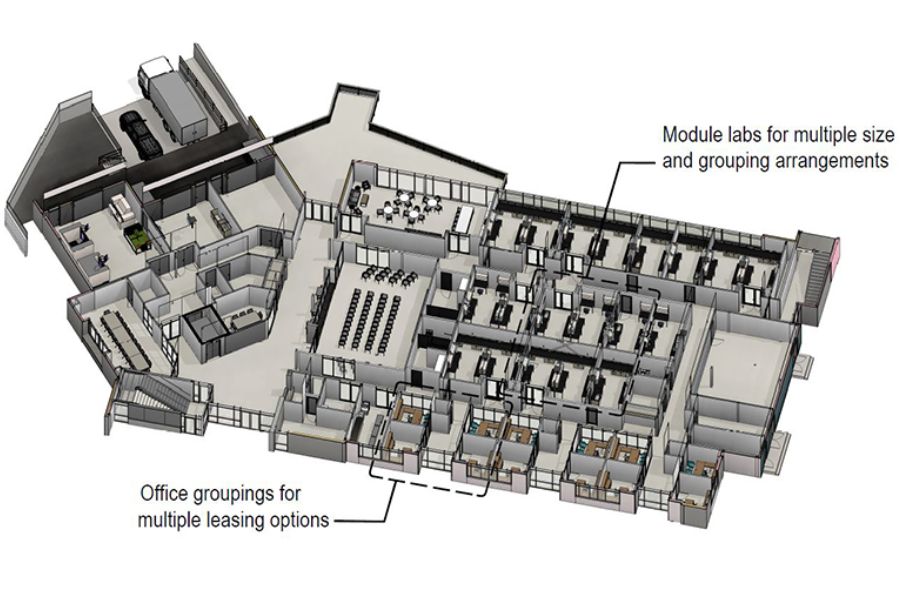Design-Build for Science Projects: It’s All About Chemistry

You would anticipate there being some science involved when it comes to the planning, design and construction of complex facilities like research laboratories and pharmaceutical manufacturing operations. But the secret ingredient in these projects is a different kind of chemistry than you’d expect.
For all the needed technical know-how and engineering expertise, successful design-build teams understand it’s vitally important to make sure everyone is on the same page working toward a common goal. Making sure you have some simple, people-focused, relationship-driven practices in place can get your team on the right path.
Building the Right Team
RS&H has established itself as a leader in the design-build space, emerging as a trusted partner for several contracting and engineering partners across the industry. As RS&H assembles its teams, the firm keeps these questions at top of mind:
- How well does the team work together?
- How well does the team anticipate the needs of its clients?
- How regularly does the team encourage the ideas of their colleagues?
- How does the team identify pitfalls and resolve conflicts in a way that allows the project to keep moving forward?
While design-build may not be a new concept, it is an approach that is uniquely suited to navigate the needs and challenges associated with science design and construction projects. These projects require the seamless integration of architectural, engineering and building expertise through a collective group, understanding that each decision made in the process impacts others in terms of scope, schedule and cost.
As such, the best partnerships in this space operate as a unified, collaborative team composed of multiple professionals who are each able to bring to the table a unique and important knowledge base.
“There are some that don’t understand the importance of teaming,” said Michael Vascellaro, Vice President at RS&H. “They still want to operate as if it’s supposed to be an adversarial relationship between contractor and designer. There are a lot of contractors trying to do design-build, but they haven’t gotten over that ‘us-and-them’ dynamic. That’s got to be left at the door with design-build.”
RS&H Buildings Design-Build Manager Rob Smedley admits that forging these relationships requires a bit of experimentation, but the formula for success remains the same.
“For RS&H, we work well with our partners because we understand and respect each other,” Smedley said. “Culturally, it doesn’t matter what the delivery method is; if you have the right people on any job, it can go well.”
Guiding Principles Strengthen Partnerships
RS&H has taken an intentional approach to identifying the right partners, putting in place a simple, team-driven philosophy to guide project work. While scientific expertise is essential for any of these teams to reach their goals, several other principles are equally as important, such as:
- Having partners and colleagues who act with integrity and trust
- Embracing the importance of teamwork
- Developing and adhering to a sustainable, agreed-upon set of guidelines and protocols
- Having passion for the work they do and the people they serve
As an example, Vascellaro points to an ongoing design-build collaboration in Tennessee. This is a design-build project for a nearly 100,000-square-foot energy research lab the team secured thanks largely to the trust they had placed in one another.
The initial design concept called for a three-story structure that required progressive collapse, which is a very costly consideration for any project. In the initial meetings during the bid process, Smedley made note of a subtle comment around the client’s preference for a two-story structure.
With Smedley encouraging them to do so, our design-build team decided to take a risk and craft a two-story structure, the only team in the bid process to submit such a proposal.
The attention to detail paid off, as the two-story design from our team sealed the deal.
“The key there is to listen to the client’s aspiration,” said Vascellaro. “Pay attention to those little things because that can give you a real heads-up. There could have been other partners who said ‘No, we need to do what the owner expects.’ But everyone was on board from the beginning.”
Seamless Teaming Saves Times, Money
That level of bold risk-taking wouldn’t have been possible had there been an adversarial relationship among the design-build team, where the designers are distrustful of the contractors and vice versa. Instead, there was a distinct level of buy-in across the board, the culmination of years of investment put into building a sustainable, working relationship that invites everyone to the table and respects all ideas.
This type of seamless teaming approach is vitally important for science facilities. Many projects, such as in the BioPharma industry, feature clients who must plan their work in advance to build up a suitable inventory of their products or research. They also begin the process of contracting and scheduling with their customers based on the date their facilities, whether new construction or a renovated facility, will be online and able to start meeting orders.
Missing a deadline or overlooking a simple element of the project isn’t just an inconvenience in these instances. It could mean lost time to conduct research or develop products, and lost time means lost money for the client.
That’s why a team-oriented partnering process grounded in mutual respect with understood protocols for how the team will function can set firms up for lasting, meaningful success.
Learn more about our science services for your next project.




